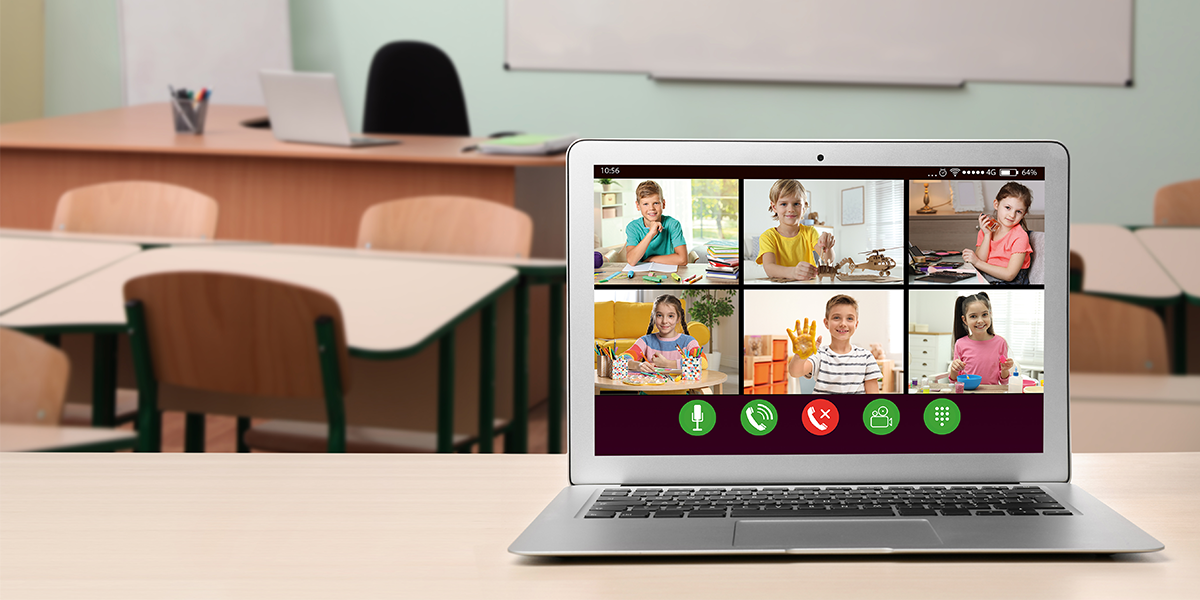The Ideal Classroom

I was recently recording a podcast with a group of fellow technology managers in higher ed. A question came up that I have not thought of in quite a while: What does the ideal classroom look like? Often when we ask questions like this we limit ourselves to the current technology that we know exists, or we try to stay within some type of imaginary budget. These restrictions tend to stifle our creativity. Yet, in order to tell the manufacturers and integrators what we want in a room, we need to release the full potential of our creativity. If we only give feedback about how a control system needs DisplayPort inputs rather than HDMI, that is not moving the ball forward, it is only making our tasks a bit easier.
So — what does the perfect classroom look like? Over the pandemic, we learned quite a bit about remote teaching and hybrid teaching. Some of this will stick, but my observation is that for the most part, teaching has gone back to what it was before the pandemic. The things that we learned will now need to integrate into our everyday classrooms.
For instance, we installed cameras and microphones in every classroom, and that is going to stay. Going forward, every classroom on campuses will have that technology built in. We learned that it is extremely helpful for a number of reasons, even if you don’t have hybrid teaching as a regular part of your academic offering. However, using these tools may actually now create more support needs. During the pandemic, faculty used these tools every single day, so they became very fluent in them and the idiosyncrasies we all know cropped up. Yet, once they don’t use this technology as much, they forget the idiosyncrasies and just expect the systems to work. So, this is number one in the ideal classroom: Systems that are simple to use. In the case of microphones and cameras, that means they need to be automatic. Faculty should not ever need to worry about controlling a camera and/or turning on and off microphones. At most, a faculty member should simply be able to press a single button, “Videoconferencing,” and all necessary controls are automatic — they shouldn’t have to press another button or change another setting.
The second thing we have learned that is sure to stick around is that students need a computer in order to succeed in college today. We have witnessed that instances of faculty asking their students to bring a laptop to class have grown significantly over the past several years. Interestingly, even with this increased use of laptops in the classroom, we have not seen an explosive growth of “active learning”. In discussions with colleagues at other institutions, they are seeing the same thing. They design very expensive “active learning” classrooms, but the faculty use them just like they would any other room. We can walk into an active learning room on campus and find the faculty member’s computers displaying on all six or eight screens in the room, rather than the students actively sharing and collaborating using these screens. Some of this is due to faculty needing to learn how to teach in an active environment. But we can not excuse the technology. Even well-designed rooms right now require a fair amount of training and knowledge for a faculty member to use the technology in active learning spaces. This is likely in the back of a faculty member’s mind when they think about changing their pedagogy.
So, in a perfect classroom, we would need to have the ability to turn it from a lecture room to an active classroom with the press of a button. While the room is a lecture-style, we would need to have writing surfaces surrounding the room. If you have ever spoken with faculty at a higher ed institution, there is no such thing as too much writing surface in a room! When they want to display something, it would have to be able to be done without blocking or losing that writing surface (the ageless problem of a screen covering the chalkboard). This is where creativity takes hold. People are probably thinking, just display on the whiteboard, and there are even whiteboards that have low light reflection, so they don’t get a hotspot. That is an acceptable solution if you are trying to figure out how to do this with current technology. Yet, I am dreaming of more creative solutions. What about direct-view thin panel displays that allow someone to write on them as a whiteboard, but can also display digital content? And, they fit inside the wall, so that all the walls are a flat surface. There is no distinguishable difference between the display and the writing surface.
A final thing that an ideal classroom has to have is accessibility features. Many, many blogs can and have been written on this topic. Along with Universal Design for the physical aspects of the room, we need to have better AV tools for individuals with hearing or visual differences. These support structures exist, but are expensive, uncommon and misunderstood. We need to get to a point where they are ubiquitous and universally used, because they actually benefit everyone.
Finally, to make the perfect classroom, we truly need amazing and creative control system designers. We need people who can think beyond how we have always done things (touch panels) and think about how we should do things. When we think of a college course the time spent in a classroom is priceless and limited. It makes perfect sense that a faculty member does not want to spend time figuring out new systems or tinkering with technology to do what they want. Our technology is smart enough to make these systems much easier to use, we only need to apply our creativity.

